Interactive Narratives Revisited
Ten Years of Research
Ernest W. Adams
2005 GAME DEVELOPERS’ CONFERENCE
This is an approximate transcript of the text of my lecture at the 2005 GDC. I present it in this form because the nature of the material does not lend itself to the traditional paper format. Also, because the lecture is informal and to some extent ad-libbed, this is not a verbatim document.
Introduction
Good afternoon. This lecture is “Interactive Narratives Revisited: Ten Years of Research.” I’m Ernest Adams.
I’m going to begin by giving you the background of this lecture. Ten years ago at this conference I gave a lecture called “The Challenge of the Interactive Movie.” At that time there was a great deal of excitement about interactive movies. The CD-ROM had recently been invented and there was room for a lot more content in our games, so the notion of making an interactive movie seemed obvious. Interactivity is cool, movies are cool, therefore interactive movies must a fortiori be cool squared. Everybody was talking about convergence, and Trip Hawkins was running around yelling about the New Hollywood, which was going to make his new machine, the 3DO Multiplayer, a colossal worldwide smash megahit.
Ahem. Yes. Well, we’ll try not to dwell on that too much.
Looking back at the situation at that time, text adventures had already died as a commercial genre, but graphical adventure games were still the biggest, richest, best-looking games around. They had held this position, thanks largely to the work of Sierra On-line, for most of a decade.
Some of the hottest games of that period were either adventure games or contained large story elements. I’ll give you a few examples as a reminder.
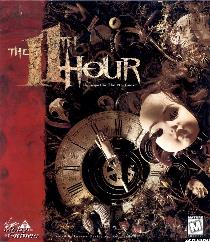
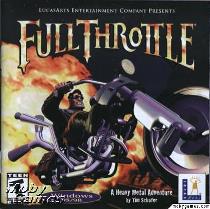




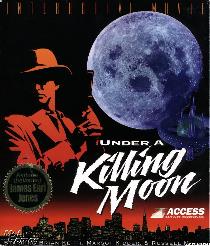
If anybody needs convincing about the seriousness of this “interactive movie” stuff at the time, note that Wing Commander III featured Mark Hamill and Malcolm Macdowell, and Under a Killing Moon included no less than James Earl Jones, Margot Kidder, and Brian Keith.
One of the conclusions I arrived at, looking at the variety of games that were being called “interactive movies” at the time, was that it’s impossible to tell what an interactive movie is supposed to be by looking at representative samples. So many different kinds of things got called “interactive movies” at the time that they had practically nothing in common.
My lecture contained a critique of the whole concept of interactive movies, and in fact I ended up saying that I didn’t believe there was any such thing as an interactive movie at all, a remark which produced prolonged cheering in my largely techie bad-attitude game developer audience. The challenge of the interactive movie, I concluded, was to make decent computer games in spite of the fact that the marketing department will insist on sticking this idiotic label on your box.
So I abandoned interactive movies as a design concept, because I couldn’t figure out what they were supposed to be, and looked at interactive narratives from an abstract, theoretical point of view. In that lecture, I identified three key problems that I felt made it difficult to create interactive narratives. So the idea behind this lecture is to look back and see how things have changed since I named those problems… to see if, perhaps, any of them have been solved.
Before I go any further, though, I need to issue a disclaimer. When I proposed this talk to the selection committee, it was my intention to try and read all the papers on interactive narrative that have been published over the last ten years. Well, five or even three years ago, that would have been easy. Since then, there has been an explosion in research, and I simply haven’t been able to keep up with it all. For example, I know that Chris Crawford has written a new book on the subject, and I haven’t even gotten around to it yet.
So I’m sorry to say that this talk is not as comprehensive as I would have liked it to be. It’s necessarily going to be a personal and somewhat haphazard look back. I haven’t had the time to research it in the detail that I would like.
Three Problems for Interactive Storytellers
These were the problems as I identified them at the time:
The Problem of Internal Consistency: How do we make sure a story is logically, emotionally, and narratively coherent when the player is out of our control? What if the player is controlling Superman as his avatar, but wants to do something very unlike Superman: killing people at random, for example? Or, using another example, how could you possibly let a player modify the plot of Casablanca without destroying its emotional power? Casablanca ends the way it must end; if you could simply go back and change it, Rick’s heroic sacrifice becomes meaningless.
The Problem of Narrative Flow: How do we make sure the player is prepared for the dramatic climax of the story when it arrives?
The Problem of Amnesia: What do we do about the fact that story characters understand the world they live in, but the player is amnesiac about that world? Why does the player have to spend time at the beginning of every game exploring what is supposed to be his own natural environment?
I also identified a number of possible solutions to some of these problems, but I decided that most of them weren’t very satisfactory.
The Problem of Internal Consistency, solution 1a: Don’t give the avatar enough depth such that the player can violate his nature. In other words, don’t let the player play Superman. Only let the player control someone without a personality. Objection: this is hardly good storytelling! Bland, neutral protagonists are not a hallmark of great literature.
The Problem of Internal Consistency, solution 1b: Create a story so bland that there are no emotions or activities that can be inconsistent. Objection: Ditto. It’s not good storytelling.
The Problem of Internal Consistency, solution 2: Don’t give the player any actions to perform that will allow her to violate the avatar’s nature. In short, limit the interactivity. Objection: this is hardly good gameplay! Placing limits on the player so that she cannot interfere with our nice story is not what players come to games for.
The Problem of Narrative Flow, solution 1: Limit the player’s interactivity so she can’t really get off the path. Tell a linear story, or force the player by some means or other to stay on the right path. Objection: Again, limited interactivity are not what games are for, and I argued that players don’t like being chivvied along a fixed path.
The Problem of Narrative Flow, solution 2: Let time go on around the player, and if she’s not ready for the dramatic climax when it comes, too bad. Objection: This turns all such games into a race against time. The player loses repeatedly and has to reload all the time.
The Problem of Narrative Flow, solution 3: Tie advances in the plot to advancement by the player. This is the classic adventure game approach. The game only moves forward as the player does, so the player is guaranteed to be ready for the dramatic climax when it arrives. Objection: This feels mechanical. You can tell that nothing is happening unless you make it happen. There’s no sense of urgency.
The Problem of Amnesia, solution 1: Make games in which the protagonist character has amnesia. Objection: This is not a major genre of literature. The number of books and movies about a character who has amnesia is vanishingly small. This solution is at best a poor workaround.
The Problem of Amnesia, solution 2: Tell stories of a type in which it is reasonable that the protagonist does not know what is going on. Two classic types are heroic quests and mysteries. Not surprisingly, many games, especially adventure games, fall into these categories. Objection: Although this solution works, it limits the kinds of stories we can tell rather sharply.
 So
because none of these solutions really work well, I came to the
conclusion that there’s an inverse relationship between interactivity
and narrative. The more control you exercise as the author, the less
freedom you give the player, and vice versa. You can’t really maximize
both. At best you can seek to strike a satisfactory balance between
them.
So
because none of these solutions really work well, I came to the
conclusion that there’s an inverse relationship between interactivity
and narrative. The more control you exercise as the author, the less
freedom you give the player, and vice versa. You can’t really maximize
both. At best you can seek to strike a satisfactory balance between
them.
I ended that lecture with what might almost be considered an anti-narrative manifesto. I gave a pean of praise to the wonders of interactivity, and then I concluded:
“It’s not our job to tell stories. It’s our job to create worlds in which stories can happen. To build playgrounds for the mind.”
The Road We’ve Travelled
So that was the state of things in 1995, as I saw them. I now want to take a look at some of the things we’ve done since then, starting with the game industry itself.
The most obvious change is that stories have begun to creep into other genres, and in fact those genres are enlivened and enriched by them.
Role-Playing Games
RPGs
have had stories for a long time, but the earliest ones weren’t very
good. They started with randomly-generated dungeons and completely
trivial storylines, and the introduction of richer stories has been
smooth and gradual. The Final Fantasy series is well-respected for its stories, although in my opinion, Planescape: Torment is probably the best example to date in terms of the quality of the writing.


 Shooting Games
Shooting Games
Since 1995 we’ve invented the rail-shooter: Metal Gear Solid, Half-life,
and so on. In some respects these are the most successful because they
map the linear story onto the physical space. However, the type of
story they’re able to tell is quite restricted. It’s consistent and
flows properly, but it is necessarily about, well, shooting things. To
paraphrase another saying, if all you have is a BFG9000, then
everything looks like a cacodemon.
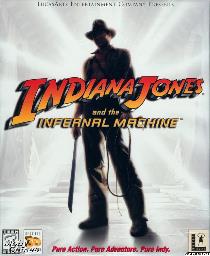 Action Games
Action Games
One of our most important achievements has been to invented the action-adventure, a genre somewhere between the mindless frenzy of the traditional action game, and the slow, deliberate puzzle-solving of the traditional adventure game. Indiana Jones and the Infernal Machine is an early example of an action-adventure, abandoning the classic point-and-click approach of the earlier LucasArts Indiana Jones games.
Like
RPGs, action games started with completely trivial stories, but have
gradually been including more and more story material. This is partly
due to the growth of storage space on our mediums, and also partly due
to a desire to appeal to larger markets. Old-time hardcore gamers still
button through the story aspects as fast as they can so they can get
straight into the killin’, and many of them decry or sneer at the
introduction of stories in action games. They also complain that action
games are getting too easy. But old-time hardcore gamers are a
dwindling percentage of the overall market. As time goes on, they will
be reduced to a niche.
 Strategy Games
Strategy Games
We have begun to add stories to strategy games to bind the missions together, with varying success. Warcraft III
also introduced hero characters, and where you have characters you tend
to have stories. This represents a cross-genre merging with
role-playing games.
 Vehicle Simulators
Vehicle Simulators
Interstate 76 was a vehicle simulator with a story. The story was intentionally corny, but effective.
In all these cases, story has remained secondary to
gameplay. The story provides motivation and reward, but it is not the main thing the player is there for.
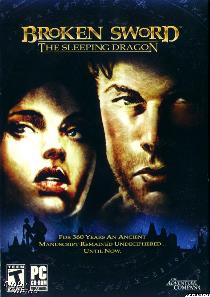 Adventu re Games
Adventu re Games
And
then of course there are the traditional adventure games -- the ones
that used to be the biggest, richest games on the market. Few of the
major publishers build them any more. It’s not as if they’re dead, as
many people claim. It’s just that the market for them didn’t grow at
the same rate as the market for all the other genres, so as a
percentage of the total, they’re pretty small. It was the invention of
the 3D accelerator card that caused this huge growth in the other
genres. The 3D accelerator means we can provide more adrenaline, and
entertainment through adrenaline is easier to achieve than
entertainment through either logical challenges (puzzles), or narrative
experience.
So, as we can see from these games, story is compelling -- that’s why we’ve begun introducing it into strategy games and vehicle simulators. We have a desire to use stories in our games; it makes them feel richer. But for the most part it remains a backdrop. It’s not the main point of the game.
What About the Problems?
And what about the three problems I described back in 1995? Well, for the most part, we’ve avoided facing them.
The Problem of Amnesia
We’re still making games with a lead character who has amnesia, to try and cover up the problem. We’re also still mostly making mysteries and heroic quests. That’s all well and good -- it gets around the problem -- but we’re never going to fulfill the potential of this medium if we limit ourselves to those two genres of literature.
However, I have realized since then that even real stories need an introduction of some kind, even if it requires the reader to work a bit to understand what’s going on. Really well-crafted novels or movies have very subtle introductions in which the introductory material is so cleverly woven into the plot that you don’t notice that you are being introduced to the characters and situations.
We have to learn how to craft better introductions. Dumping a lot of expository material on the reader or the player is bad practice in any medium. We need to put the player in environments or situations where they cannot, or don’t feel a need, to pick up everything they see. I think if we spent more time crafting good introductions, rather than just treating it as a nuisance to be dealt with shortly before shipping the game, we wouldn’t have such a problem with player amnesia.
The Problem of Narrative Flow
Narrative flow is still a problem for us: how do we make sure the player is ready for the dramatic climax when the dramatic climax occurs? For the most part, we’re still using Solution 3: advance the plot in synch with the player’s advances. And it still feels mechanistic, especially when the player arrives “just too late” to prevent something, and no matter how fast they play the game, they’re always “just too late.”
To some extent we have also switched to Solution 1, by making the games more linear. Adventure games are now more linear than they once were. Rail-shooters are of course linear. What we do is map physical space onto the plot -- onto time itself -- and then force the player to traverse the physical space. And the shape of that space has become more linear than it used to be.
The Problem of Internal Coherency
With respect to the Problem of Internal Consistency, we have arrived at a sort of compromise. Let’s consider two types of people:
Soldiers in the trenches during WWI.
A wealthy Peruvian during WWI.

On the left we have soldiers in the trenches during World War I. They have a role to play in the war, but no freedom to decide what they will do or how. Their experience is not unlike playing a rail-shooter: all they can do is shoot, and advance if it is safe to do so.
On the right we have a wealthy businessman in Peru during World War I. He has complete freedom to choose his actions: the war does not constrain him in any way. On the other hand, he has no power to influence the war, either. His experience is analogous to the sandbox mode of Grand Theft Auto III: you can do what you like, but what you do doesn’t have any effect on the story.
One group of people is totally constrained by their circumstances -- the story they’re in. The other person is completely unconstrained, but he’s not in the story at all.
In between these two types of people is someone rather special. Someone like a commando, a resistance fighter, or a spy. Someone who is involved in an important situation, but has some freedom (but not total freedom) to choose his own actions.
Sidney Reilly, “Ace of Spies”
These kinds of people make good compromise heroes for storytelling games, because they have a certain amount of freedom, but not unlimited freedom, to influence the situation they’re in.
Another thing that I think we have realized is that players don’t really want to violate a character’s essential nature anyway -- at least, not if they’re seriously involved in the story. Sure, if you get to be Superman, the first thing you’re going to do is see if you can kill a lot of people; but if you really want to experience the story, then it won’t bother you that Superman isn’t allowed to do these things.
The Resurgence of Linearity
I said earlier that I think we’ve gone back, somewhat, to telling linear stories. There are multiple ways of approaching the issue of branching stories -- you can create fully-branching storylines, with (possibly) multiple endings; you can create stories that branch less often, and tends to remain within a few distinct plot lines; or you can have what Charles Cecil calls “multilinear” stories, in which the main plot has particular nodes that the player must pass through, but there is a certain amount of freedom in between these nodes.
The game industry has largely abandoned the notion its efforts to create fully branching, or even partially-branching interactive narratives. They’re too expensive to make, and it’s not certain that players want or need them anyway. And they still present design and development difficulties. Unfortunately, it’s easy to create stories with logical inconsistencies in them if you have a complicated branching plot.
In short, I think the industry hasn’t solved the three problems for interactive storytellers so much as sought workarounds for them. Rather than face them head on, we’ve improved the quality of our storytelling by, in large part, abandoning our efforts to be interactive about it. We have gone, unapologetically, back to basically linear stories. Interactivity earns you progress through the story, but it doesn’t have much effect on the outcome.
Why We’ve Had So Much Trouble
I now want to take a look at why, I believe, we have had so much trouble with these problems. It begins with what I believe is a failed analogy between narrative and gameplay.
"Conflict" versus Dramatic Tension
Hollywood screenwriters use the term “conflict” to refer to the essential problem of a story. In this formulation, there are three kinds of conflict: interpersonal conflict, conflict between a person and their environment, or simply internal conflicts among a person’s emotions or desires.
Unfortunately, games are often seen in terms of “conflict” also -- whether it’s immediate and direct, as in a war game, or more theoretically, as in a conflict of interests between players in an economic simulation. In formal game theory, a “game” is defined as a situation in which there is a conflict of interests.
The fact that we use the same words for both encourages us to think that they are analogous, and this leads us into error. I think the Hollywood formulation is too limited. Maybe it works for movies, but I don’t think it works for all literature. I prefer to use a term that I learned in junior high school English class, dramatic tension. Dramatic tension is more general than “conflict” and it avoids this spurious emphasis on the opposition of forces. There is no “conflict” in wondering whether that cute guy is going to ask you to the prom or not, but there is dramatic tension.
Gameplay Tension
At the same time, there clearly is such a thing as gameplay tension as well. Gameplay tension arises from the player’s immersion in the game, his commitment to advancement, his desire to win. There is gameplay tension in wondering whether the roulette ball is going to drop in slot 17 or not. Even in chess, a game of perfect information with no element of chance, the gameplay tension arises from wondering what your opponent is planning to do, and wondering whether she is smart enough to figure out what you’re you’re planning to do.
The Disanalogies
Both dramatic and gameplay tension involve a concern for the future, worrying about the unexpected. But there are significant disanologies.
First is the repetition disanology. Gameplay tolerates repetition, and narrative does not. When you are playing a game, you are willing to tolerate a certain amount of repetition -- often quite a lot, in a game like Risk -- because you have a vested interest in each maneuver, even if it is identical to an earlier maneuver. In a story, however, no event should ever occur twice, unless there’s some extremely good reason for it, and even then, it would be very unusual.
The second disanalogy between gameplay tension and dramatic tension is the randomness disanalogy. Gameplay tolerates random chance, and narrative does not. If you’re playing backgammon, you’re about to lose, and you happen to throw double-sixes and thereby win the game, that’s perfectly acceptable: it’s the action of chance. However, if you wrote the same scene in a story, the reader would consider it a deus ex machina. It’s not acceptable for the hero of a story to be saved by luck. Everything in a story should happen for a reason.
This is why traditional adventure games work, better than any other genre of computer game, as stories. If they’re well designed, adventure games contain neither repetition nor randomness. Every puzzle is different from every other puzzle, and every puzzle has a logical, non-random solution. Rail-shooters have this quality too. By forcing you down a rail, the game can guarantee that you never run into the same situation twice.
These two disanalogies lie at the heart of the matter. We expect different things from narratives than we do from gameplay. Narratives are not a simple recounting of events. They elide irrelevancies like getting dressed, using the toilet, and eating. Games elide some of these irrelevancies also, and a lot more besides. But narratives also elide backtracking, false starts, and dead ends. Games do not elide these elements; they are part of gameplay. They are essential to gameplay tension, and this is part of the reason that the analogy is faulty.
In his Gamasutra article, “Formal Abstract Design Tools,” Doug Church makes a reference to the “story” of a hockey game. Although my respect for Church is boundless, I think he’s got the wrong end of the stick here. If you relate the events of a hockey game, it would be a bad story, including every blocked shot and every player who falls down and then gets up again. Most of those events, while exciting in a game context, are boring and irrelevant in a story context.
The central point here is that stories require dramatic novelty. Things must change constantly, and they must never repeat. In games, there can be periods of stagnation, when nobody gains any ground, and there can be circumstances in which you end up in exactly the same situation that you were in once before. Games remain exciting in spite of these things because gameplay tension is not the same as dramatic tension. This, I think, is part of the reason that we’ve had so much trouble merging storytelling and gameplay: because they’re not as similar as we think they are.
I would even venture a hypothesis -- and I have no, none, zero evidence for this -- that the part of our brain that we use process stories is in fact different from the part of our brain that we use to play games.
The Academy Earns a B-minus
I now want to take a look at what has been happening in the academic world in the last ten years. The single biggest difference between 1995 and now has been the groundswell of academic research. Games have gone from being beneath its attention to the hot new medium in about three years flat. Game education and research programs are starting up at academic institutions all over the country and indeed the world. Much of this work is straightforward teaching of game design and development as training for industry, and that’s valuable because it means we will have to do less on-the-job training.
With respect to interactive narratives specifically, however, the situation is a fearsome muddle. There’s a lack of a common vocabulary; a lack of a common approach. And there are turf wars. Literary theorists of narrative -- “narratologists” believe that narrative is rightly their turf, so it’s up to them to decide what interactive narrative will be. Theorists of gameplay -- “ludologists” -- believe that interactive entertainment is their turf, and only they can properly decide what interactive narrative will be. These two camps are somewhat divided between the United States and Europe, with the narratologists in the USA and the ludologists in Europe. Regardless of where they are, they’re not progressing as much as I would like.
The academy’s ability to progress is limited by several different things, which I’ll look at next.
Politics
A certain amount of academic literary debate is mired in political and meta-political issues. A good deal of literary criticism is written from a particular political perspective: Marxism, feminism, post-colonialism (the study of works written in post-colonial nations, e.g.. African and Southeast Asia), and so on. Among the meta-political issues is the question of Structuralism (a presumption that the world is organized according to some objectively identifiable principles) versus post-Structuralism (a presumption that the world is a social construct with different ideologies competing for control).
None of this is terribly useful for developing interactive narratives. Although analytical, it tends towards criticism rather than creation, and it’s largely about non-interactive narratives in any case. When debates about interactive narrative get bogged down in political issues, they go nowhere.
Quality
In creating literary theories, academics don’t take into account the quality of the storytelling. And that’s quite appropriate: they’re not allowed to. Quality is subjective, and theorists of literature are trying to arrive at objective rules that apply to all narratives without regard for quality. If you incorporate a subjective element into the theory, then it opens everything up to question.
That’s OK for them but not for us. We need to create good stories. We’re entertainers and our primary concern is to leave people feeling entertained. Whatever theory of interactive narrative we use, it has to produce not any old story, but stories that our players believe in and want to be a part of. Academic theorists of of narrative aren’t usually worried about credibility or entertainment value. But adding interactivity and gameplay to a story introduces elements which disturb the credibility and the quality of the story -- as I described above in my three problems. So because they’re not allowed to concern themselves with quality, the academy isn’t able to address my concerns.
Postmodernism
Finally, many academic theorists are approaching the issue from a postmodernist perspective in which nearly anything can be a story. Some people see narrative in everything. There’s currently a vogue for applying narratological principles to almost anything; it’s the buzzword du jour. Steve Jobs has been heard to make remarks in the press about how it’s important to define the next generation of user interfaces for the Macintosh in storytelling terms. One has to wonder exactly what this means: “Once upon a time there was a happy little file that lived all by itself in a pretty folder in the middle of a huge hard drive?” This is not helpful.
Jacques Derrida, the inventor of deconstructionism, was once asked, “What is a text?” And he replied that anything can be a text. Well, if anything can be a text, and narrative can be applied as a metaphor to anything, then any effort to formulate an intellectually sound theory -- in such a way that it can’t be refuted, in other words -- ends up being hopelessly vague.
We have a similar problem with defining “gameplay” in our industry. There are so many different kinds of gameplay that it’s almost impossible to define it in terms that are genuinely useful. Sid Meier, for example, famously defined it as “a series of interesting choices.” Dino Dini has defined it as “interaction that entertains.” Both these definitions are hard to argue with, but too vague to be useful in ordinary practice. For teaching purposes, I use a definition which I know to be incomplete, but which gives people something to build on. My definition is that gameplay consists of the challenges the player is confronted with plus the actions she is allowed to take to overcome those challenges. I know this definition isn’t complete because it doesn’t include creative play, or the role of imagination in gameplay. However, it gives people something to start with.
So, to the extent that a given professor or school remains mired in a philosophical search for ideal, irrefutable definitions, its work is unlikely to be useful to us. I'm interested in the creation of good fiction, not in navel-gazing about the meanings of terms.
Now For the Good News
This is not to say that all the academy’s work has been useless. There are several academics whose work has been directly helpful to us in the game industry, where interactive narrative is concerned. Janet Murray, of Georgia Tech, of course, the author of Hamlet on the Holodeck. Henry Jenkins of MIT has done some work on issues to do with the use of time and space in interactive storytelling, among many other things; he’s also one of our most fearless defenders when the Congressional attack dogs are on the prowl. Joseph Bates led a very important project called Project Oz at Carnegie-Mellon University. Project Oz is now closed down, but some important work has come out of it. I’ll talk about that later.
Most of these people have been working not on purely abstract theories of narrative, but examining existing computer games, trying to analyze them, and looking for ways to make them better. In some cases, they’re trying to actually build running software that could be useful in games.
In addition the academy is doing plenty of valuable work that is unrelated to interactive narrative -- AI, human-computer interaction, augmented reality and VR, animation techniques, and so on.
Lindley’s Paper
I want to talk for a minute about an extremely useful paper I recently read by a guy name Craig Lindley. Lindley lives on an island in the Baltic Sea off the coast of Sweden, in an ancient medieval town. His paper is called “Story and Narrative Structures in Computer Games,” and it’s a very interesting survey which proposes some new ways of thinking about these things.
Lindley’s paper discussed the concept of Structuralism in narrative theory, the idea that narratives have a generative substructure that can be identified. Note that this is different from the political Structuralism that I referred to earlier, although there are some related ideas. Structuralism is not a new idea, and not new to me either, but he explained it in a very lucid way.
Back in the 1960’s, a researcher named Vladimir Propp wrote a pioneering work called Morphology of the Folktale. In it he presents an analysis of the structural generative system underlying a genre of Russian folk tales. Lindley writes, “Within this system, a typical folktale is built around seven types of character. The names of the characters containing these functions differs from tale to tale, but the type of actions they perform are always the same.” Propp determined that these characters can have 31 different types of plot functions in the traditional Russian folktale. This is an example of narrative Structuralism, and a number of other people followed suit. Joseph Campbell’s work on the hero’s journey is classic Structuralism.
To describe how structuralism works, Lindley included a diagram in his paper, which I am going to shamelessly steal from him.
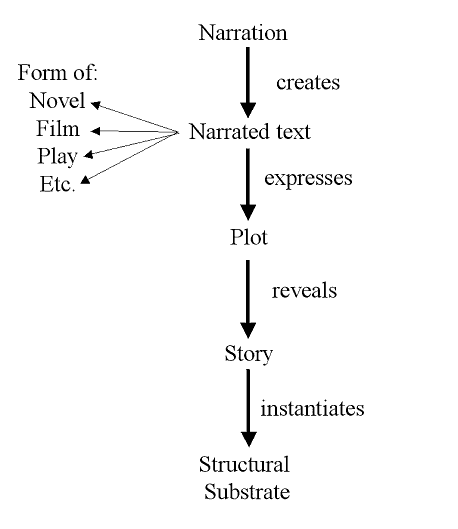
His diagram requires a slightly different use of terminology. The story is a raw sequence of events in correct chronological order. The plot is those events with certain elisions, emphasis and de-emphasis, and perhaps re-ordered for dramatic purposes . As Lindley puts it, “Its [the plot’s] function is to emphasize or de-emphasize certain story-events, to interpret some and to leave others to inference, to show or to tell, to comment or to remain silent, to focus on this or that aspect of an event or character.” The narrative instantiates the plot in a particular text.
He goes on to say, “The reason for separating the story as a different level of meaning from the narratives that express it is the fact that the same story may be expressed in many different narratives, either within the same medium or across different media.” [Emphasis mine.]
Now all of a sudden, we’ve got something we can work with! For those of us who are trying to create automated story-generation systems, I think this is a very useful way of thinking about it. We might be able to build a storytelling system that uses templates to generate stories (in Lindley’s sense of a sequence of events), then uses heuristics and other rules to turn the story into a plot, and finally some kind of language-generation mechanism to narrate the plot into words.
It’s not as if narrative Structuralism is something new -- in fact, modern-day narratologists consider it old-fashioned for the purposes of analysis, and in the world of literary theory, it has largely been replaced by post-Structuralism and postmodernism. One of the critiques of Structuralism is that it privileges the point of view of the analyst: you cannot yourself stand outside the system that you are investigating. But in our case, we do have a privileged point of view: as game designers, we are creating the system in the first place. Structuralism, even if it’s out of fashion, is something that we in the game industry should give serious thought to as we try to create generative systems.
This ties directly into my next topic.
Embedded versus Emergent
At the 2000 Game Developers’ Conference, Marc, LeBlanc gave a lecture called “Emergent Complexity, Emergent Narrative.” He introduced the idea that narrative can emerge from complex automated systems rather than from pre-written blocks of material. He made a distinction between what he called “embedded” and “emergent” narrative. Embedded narrative is pre-constructed, and the player encounters and experiences it in the course of gameplay. Emergent narrative arises out of the process of playing.
This is not a completely new idea; people have been saying that the experience of playing is the story of a game for a long time. However, LeBlanc provided us with an elegant formulation.
As I read this, I came to an important realization that two of my Three Problems for Interactive Storytellers -- Internal Consistency and Narrative Flow -- are problems caused by embedded narrative. The Casablanca problem is essentially a problem of embedded narrative: the whole story as told fits together so tightly that any fiddling with it would make it fall apart. But if it were emergent, it wouldn’t have a fixed structure of any kind. It would be about Ilsa and Victor showing up in Casablanca, and the characters would have to work out for themselves what was going to happen. That might work -- but it also might not produce as emotionally satisfying a conclusion as the one that was deliberately constructed for the movie.
That “playgrounds for the mind” phrase from my lecture ten years ago, was, in effect, anticipating emergent narratives.
Emergent narratives, which can avoid the problems I described, offer exciting possibilities for the future of interactive narrative. However, here are a lot of open questions about them.
Tricky Issues for Emergent Narratives
It is a basic principle of game design that players like to be told what to do. They always need something that they’re supposed to be working towards. This is true in all genres, not just narrative ones. Because emergent narratives lack embedded blocks of narrative material, they tend to be less specific about what the player ought to be doing. I think it’s important to realize that a “sandbox mode” in a game is not really the same as an emergent narrative. Sandbox modes let you do what you like with no repercussions (generally). In an interactive narrative, your actions should have narrative consequences.
During his lecture, LeBlanc pointed out several other problems as well:
Emergent properties don’t necessarily support the fantasy you’re trying to create. One of the characteristics of emergence is that it’s difficult to predict. The very complexity that gives rise to emergence also means that events will occur that you, as the designer, did not specifically intend. Those events may not be consistent with the fantasy-experience you are trying to create for your player.
Sometimes you get absurd fantasies. Worse yet, you may get results that are narratively absurd -- non-credible plot lines and so on. The system doesn’t know it’s trying to tell a story, so it has no idea if the story it tells is any good.
Because they’re based on mathematical models, you get some familiar problems: degenerate strategies, unintended feedback loops, and so on.
Some people have characterized the pencil-and-paper role-playing game, Dungeons and Dragons, as a system for generating emergent stories. Unfortunately, most of the stories that D&D generates are poor. Like other games, it includes large quantities of randomness and repetition. To turn a D&D campaign into a decent narrative, a human is needed to convert the raw sequence of events into a credible plot, then to narrate the plot into an enjoyable text.
The MMOG Approach
Many people have argued that online games are the answer to interactive storytelling. Among other things they enable players to experience emotions that it’s difficult to inspire in the single-player context. For example, I’ve long pointed out that most videogames inspire only two emotions, “Yahoo!” and “Damn!”, along with perhaps frustration. Massively-multiplayer online games can inspire envy, jealousy, grief, ambition, greed, and even lust if you use them for cybersex. They can do this because they involve interactions with other real people rather than simply with a simulation or an embedded story.
However, the ability to inspire emotion is not the same thing as the ability to narrate successfully. As I said earlier, one of the problems for interactive narrative is the author’s lack of control over the player. MMOGs don’t just have one player who’s out of your control; they have tens of thousands.
In practice, it has proven difficult to create story-like gameplay for individual online players. If a story-like activity (a quest, for example) is available to all players, then the outcome of the quest is always posted on on-line bulletin boards and well-known to all the players in advance. And in any case, undertaking a quest that has already been undertaken by thousands of other people robs it of most of its meaning. A real hero is a unique individual facing unique circumstances. You cannot meaningfully be a hero among thousands of other heroes, at least in the literary sense of the term.
Large-scale events, rather than individual quests, work somewhat better. You can cause the population of an MMOG to experience a war, a plague, a drought, or some other cataclysmic event that affects all of them. Stressful circumstances tend to produce stories, and where each player was and how she reacted to the event may be different. However, they aren’t guaranteed to produce a story-like experience for every player.
It seems clear to me that MMOGs do in fact live up to my stated goal from 1995: they are worlds in which stories can happen. The question is, are those stories any good? One reason that I’m not very fond of MMOGs is the fact that they’re full of other players who tend to ruin the fantasy for me. If I take the game’s marketing at face value and try to immerse myself in its fantasy world, the next thing that happens is a guy named Lord Biggus Dickus comes along and kills me for no reason. A short and disappointing story, to say the least. Of course there are games in which player-killing is not permitted; there may even be games in which you cannot call yourself Lord Biggus Dickus; but the fundamental problem is still there. MMOGs are not actually fantasy worlds at all. Fantasy worlds are inhabited by characters who behave according to the conventions of the fantasy. MMOGs are real worlds that just happen to have no physical manifestation, and they are inhabited by real people, who are, unfortunately, under no constraints to behave in a story-like manner.
It’s my belief that MMOGs are not really the answer regarding interactive narrative. They’re an answer, and that answer is perfectly acceptable to the thousands of people who play them. But they’re clearly not the be-all and end-all. They don’t satisfy my desire to experience an interactive narrative, nor that of a lot of people.
What Do Players Want?
Lindley makes the point that we have to ask what players really want, and in fact that question has a variety of different answers. He takes a look at several different taxonomies of player types in MUD and live-action RPGs, by Bartle, Yee, and others, and arrives at his own taxonomy.
Audience -- a player who is content to be told a story; this player doesn’t mind linear stories and watches the cut-scenes.
Performer -- a player who seeks to act out a character in a game world, creating that character’s performance there.
Immersionist -- a who seeks to identify with a given character and immerse herself fully in the world.
Interestingly, Toby Gard, the inventor of Lara Croft, makes a distinction between two types of player characters:
The avatar, which he sees as a sort of neutral puppet for the player to manipulate; it has an appearance but not much personality of its own. Gard says, “The Avatar is simply a visual representation of the player's presence within the game world.”
The actor, a more fleshed out character who strikes a balance between the needs of the story and the needs of the player. Gard says, “The Actor is a character distinct from the player, with its own personality, characteristics, and, to some extent, mind.”
So we might expect Lindley’s performer players to prefer Gard’s Avatar characters, while his immersionists might prefer Gard’s Actor characters, just because those are the respective degrees of characterization and control that they want.
I can suggest an even simpler taxonomy: there are those who press the tab button to interrupt the cut-scenes, and those who don’t! In any case it seems as if stories serve at least two functions in games: story-as-motivation and reward, and story-as-experience. These are fundamentally different. In the former, the story serves the gameplay. In the latter, the gameplay serves the story -- or, some would argue, is the story. In short, it looks as if we’re not going to arrive at one right way to create interactive narratives, because what players want from narrative in their games varies so widely.
A Few Disturbing Tendencies
Having arrived at the conclusion that there’s no one right way to make interactive narratives, I now want to look at what I see as a few disturbing tendencies in the way we’re approaching the issue these days. I believe we’re in some danger of getting stuck in a rut.
Too Much Emphasis on the Aristotelian Three-Act Restorative Structure
For years we’ve told students, based on Aristotle, that stories must have a beginning, a middle, and an end. This is fine as far as it goes, and it satisfies audience expectations, but I think we emphasize it so much that we risk giving the impression that it’s the only right way to write a story. Some of our greatest literature explicitly eschews this structure. The Grapes of Wrath, by John Steinbeck, for example, has a beginning but not an end, at least, in the sense that the end provides any resolution of the problem. A Hundred Years of Solitude, by Gabriel Garcia Marquez, does not have a central “conflict” or single point of dramatic tension. It’s a long, meandering narrative through the lives of a large number of people. In the seafaring novels of Patrick O’Brian, the author often sets up the preliminary conditions for a key event, then skips the event itself entirely, and simply tells you it succeeded or failed afterwards.
This raises a point that someone mentioned at my workshop on narrative game design. She said, “So I guess we’re creating novels, aren’t we?” I had never really thought about it: are narrative games analogous to novels, short stories, myths, folktales, or what? This whole process would be an awful lot easier if modern, sophisticated storytelling hadn’t been invented. If we’re content to tell folktales for ever, then we don’t have to work very hard, but on the other hand we’re not exploring the medium very thoroughly either. Storytelling has moved on since then. People like James Joyce, Virginia Woolf, Stanley Kubrick and Peter Weir have raised the bar pretty darn high for us.
But I think that’s a good thing. We need something to aim for. And I think we risk trivializing ourselves if we insist on the traditional three-act structure.
Too Much Emphasis on Joseph Campbell
This is something I’ve been guilty of myself, because the book I wrote with Andrew Rollings contains a long summary of the hero’s journey, and that’s something that I intend to correct when it goes into a second edition. I’m going to leave it in, because Campbell’s work is undoubtedly valuable, but I’m going to de-emphasize it somewhat.
It’s important to remember that Campbell’s work is descriptive and not prescriptive. He never said, “This is the correct way to write a story.” Campbell talks specifically about heroic quests, and heroic quests are well-suited to videogames because, as I’ve already stated, the avoid the problem of amnesia, and they tend to map progress through the quest onto progress through physical space, which easy for us to model. But heroic quests are not the only kind of story by a long shot.
Paint-by-Numbers Approach to Emotional Manipulation
I’m all in favor of games that explore emotion more thoroughly than they currently do. Goodness knows that we could do with some more emotional sophistication in our games at the moment. But there is an unfortunate tendency these days to see this as a simple process of tacking on particular scenes or events in order to produce a particular emotional effect. When this is done in a ham-fisted way, it absolutely annoys the hell out of me, because it’s so obvious. “Oh, look! They’ve just gratuitously killed the protagonist’s wife, and he’s all broken up about it. Well! I’m really rooting for him now.”
Whenever I see this, it tells me that the author doesn’t really have a serious commitment to his plot and characters. They’re just mechanical parts to be moved around in an effort to manipulate the audience; they’re not people to be understood and cherished. Sophisticated characters are capable of having complex responses to subtle situations, and I think that’s a goal worth working towards.
Trivial Themes or Messages
It’s kind of a new idea for game stories to have any message at all, apart from maybe, “Skill and perseverance will triumph in the end!” We’re starting to explore the possibility that games may have a theme, but unfortunately in the vast majority of cases these themes are pretty darn trivial. “Be yourself,” “Love conquers all,” and so on.
I would like to see some more difficult and complex themes explored, some ideas like, “For evil to triumph all that is necessary is for good men to do nothing,” or “Man creates the gods he needs,” or even “The hand that rocks the cradle rocks the world.” If you’re going to spend ten million dollars developing a game, you might as well have something worth saying.
Some Stakes in the Ground About Quality
Having listed these concerns, I now want to put a few stakes in the ground about quality. I said earlier that it’s not good enough for us to be able to create any interactive narrative; we have to make good ones, and I have a few criteria that I’d like to discuss. I’ve got no more right to do this than anybody else apart from the fact that I have the microphone, so you can consider this a very personal view.
1) Introduction through exposition is inferior.
This is both obvious and self-explanatory.
2) A character in an interactive narrative should carry no more junk around with him than the same character would carry in a non-interactive narrative.
The basic adventure game situation: players carry ridiculous amounts of stuff for the purpose of the story. That’s not a good enough excuse. Rewrite the story.
3) Dei ex machini are no more acceptable in interactive narratives than they are in ordinary ones.
Again, obvious and self-explanatory.
4) Player-avatar identification is not an acceptable excuse for shallow protagonists.
It is not necessary to create a shallow avatar just to help the player identify with him. Real authors manage to write books in the first person whose protagonists are both appealing and richly characterized at the same time.
5) No non-player character should ever say the same sentence twice unless either:
a) It is an expostulation, e.g. “Oh my God!”, or
b) He is explicitly asked to repeat himself.
Obvious and self-explanatory. Nothing kills suspension of disbelief faster than repeated dialog.
6) No story event (other than player action) may ever occur the same way twice.
Dramatic novelty is a fundamental requirement of a good story. No story should contain two of the same event. However, because we don’t have control over the player, a little flexibility is required here. Player-initiated events, e.g. repeatedly trying to open a locked door without the key, may produce repeated results: the door doesn’t open.
7) Any NPC response to a player action that would not be credible in a conventional narrative is also not credible in an interactive narrative.
You don’t get a free ride just because your NPC AI isn’t up to the job.
8) Every interactive narrative with pretensions to Art or Literature must have a theme or message.
Obvious and self-explanatory.
9) If an interactive narrative has multiple endings, each possible ending must reflect player actions and decisions in a way that is meaningful to the player.
That is to say, a story must have a moral; mutiple-ending stories must have multiple morals.
10) The bottom line is: Interactivity is not an excuse for bad writing!
That’s what all of the foregoing really amount to.
Options For the Future
I now want to take a look at what some people are doing on the cutting edge of interactive narrative research. There are several groups trying completely different things.
The Erasmatron
This is a long-term project by the famous game designer Chris Crawford. It has been through several iterations and has now been patented; he’s a bit vague about the details. Crawford is a master of simulation engines and algorithm-directed play, and as far as I can tell the Erasmatron is a sort of story simulation engine in which story fragments, or substories, may be parameterized and used to generate a story-like experience. But I’ve never seen the thing in operation myself.
For details visit www.erasmatazz.com.
Zoesis
Zoesis is a company that grew out of Project Oz at Carnegie-Mellon. One of the founders is the aforementioned Joe Bates. These guys are sort of doing an end run around the commercial game industry; they’re concentrating on creating believable characters for businesses, specifically websites. According to their own website, they’re creating characters for companies like McDonald’s and Heinz.
See www.zoesis.com.
Extempo
This is another company that was formed as a result of academic research. It was founded by Barbara Hayes-Roth, a Senior Research Scientist at Stanford, who first presented her work here at the Game Developers’ Conference, just ten years ago. They’re working on smart interactive characters called “intelligent agents.” They have managed to commercialize this to create training agents for businesses and websites. Extempo either builds things directly as a service, or offers an authoring toolkit that enables businesses to build their own.
The Value of Drama
This work on artificial characters is not always directly on point with respect to interactive narratives, but it is nevertheless valuable, because in the future interactive narratives will require ever-more intelligent interactive characters. Some people are working not on narratives per se, but on drama, or at least dramatic situations. Let’s take a look at drama for a minute.
Drama is of course very ancient; we can trace it back to the ancient Greek plays and beyond. There’s a continuous chain that runs from Aeschylus to us. Drama starts with plays; plays connect to improvisational theater; improv theater connects to live-action role-playing; LARP connects to tabletop role-playing games; tabletop RPGs connect to computerized RPGs. At each step we get farther from Aeschylus, and his influence is weakened. Nevertheless, there’s an essential relationship there.
One of the interesting things about drama is that it all takes place on one stage. Of course, that stage can be re-set between scenes to represent many different places. But one-act plays are different: the stage remains the same throughout the experience. What this means is that dialog alone must carry the story. The drama cannot map space onto time the way we do in adventure games. Rather, it maps conversation (or action) onto time: if people stop moving or talking, the play stops.
Dialog is an area that we haven’t really done much work on in the last ten years, apart from simply including more audio. The standard dialog tree sentence-selection mechanism in games is just about the same as always has been. Of course, natural language parsing and natural language generation are two of the very hard problems in artificial intelligence research, but in the long run I believe they will be two of the most fruitful for us. Ultimately, stories are about characters and their interactions, and at the moment, this is one of the areas in which we are weakest. If we want to be able to do what Aeschylus did -- tell stories about real people, but set in a confined space -- we need to study interactive drama. And two people are in fact doing this.
Fašade
Fašade is a project being undertaken by Michael Mateas, now at Georgia Tech and formerly of Project Oz, and Andrew Stern, who worked on the Dogz, Catz, and Babyz artificial-life projects at p.f. Magic. It’s a good example of an interactive one-act play. You play a character who is the friend of a couple whose marriage is breaking up, and you’re visiting them in their apartment. It’s mostly dialog. You can type whole English sentences to them, and they will respond, talking to you and to each other. How you interact with them affects how they interact with each other. The whole thing takes about twenty minutes to go through, and it has different endings based on what you do and say.
Fašade tries to do about six very hard things at once. In addition to parsing English, it’s trying to create realistic conversations, simulate emotional states in a decaying relationship, and show emotion through body language and facial expressions at the same time. It’s very ambitious, and I’m really glad to see them putting so much effort into it.
For more information about Fašade, visit www.interactivestory.net.
My Vision of Interactive Narratives
My own vision for interactive narratives is even more ambitious than Fašade. I would like to create an artificially intelligent dungeon master.
If you have played a tabletop role-playing game, you know that a good dungeon master makes all the difference. A good dungeon master sets up the situation and adapts it to the characters in the party, then, in effect, creates a story on the fly as the players play. Most importantly, however, a good dungeon master can react to changing situations, and adjust the story as necessary to account for them. He can create new non-player characters and weave them in seamlessly, so it seems to the players as if they have always been there.
An AI dungeon master would be able to do the same. It would be capable of generating story-like experiences on a continuing basis. It would knows the rules of good storytelling, and simply would not generate a bad story. It would know the rules of characterization, and be familiar enough with human psychology to be able to generate credible human-like responses.
Conclusion
You might think from all this that I’m implacably hostile to interactive narratives. Actually, just the opposite is true. It is the hard problems that are the most interesting, the most exciting ones, and often the ones most worth solving.
Personally, I think embedded stories will continue to exist and to work well for players who don’t insist on having too much freedom. Embedded stories are cheap to write and they allow us to bring all our creative powers to the fore. At the moment, human beings can craft far better narrative experiences than any automated storytelling system. We understand stories. We know what makes them good and bad; we know how to make people laugh and cry. Players who like the experience of being part of a story will continue to enjoy them.
Emergent narrative is the great challenge of the future -- the Star Trek Holodeck. Somehow we will have to encode the principles of storytelling into a machine that can generate narratives. And they must be credible, coherent, and above all entertaining narratives. It’s going to be a long, hard, enormously fun job.
We may actually get the physics of the Holodeck figured out before we get the software written for it.